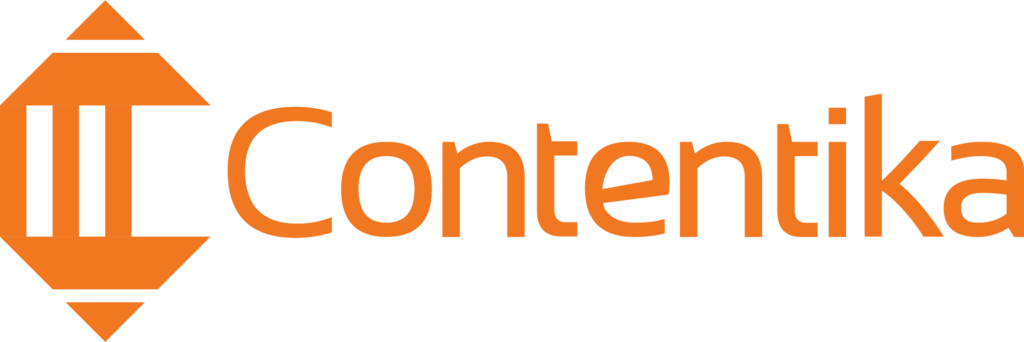As a content marketer, it’s easy to feel overwhelmed when it comes to content.
With so much information out there, how can you ensure that you’re curating only the best and most relevant material for your audience?
The fluffs and pompous jargon should be left behind, and instead, focus on crafting meaningful content that adds real value to your target audience.
To aid in this process, having a set of tools and techniques at your disposal is helpful.
In this blog post, we’ll walk you through all the essentials for efficient content curation, including some of the best tools for content curation.
You’ll also get insider tips for maximizing efficiency and streamlining your workflow in the content curation process.
What is Content Curation?
Content curation is discovering, organizing, and sharing relevant and valuable content with a specific audience.
You find the most impactful and valuable information within a particular niche or topic, then present it in a cohesive way for your target audience.
In the same way a chef carefully selects the ingredients for a dish, content curation involves hand-picking and organizing relevant information and resources for your audience.
It’s not just about gathering any random content; it’s about selecting only high-quality, valuable material that adds value to your brand’s narrative.
A critical aspect of content curation is adding your unique spin or perspective on the material – it’s not just about reposting and regurgitating information but adding your own insights and value to the content.
It follows the proverb that “good artists borrow, great artists steal” – curating content involves borrowing ideas and insights from various sources, then turning it into something new and original.
Like many people, don’t make the common mistake of thinking that content curation is the same as content creation.
That would be a fallacy. Content curation is the process of finding, organizing, and sharing useful information with your audience.
But content creation involves developing original content from scratch – it’s not just about gathering and sharing material but creating your own unique or fresh content ideas and materials.
Both are essential aspects of a successful digital marketing strategy.
Best Practices for Content Curation
To curate content that truly adds value for your audience and not just a run-of-the-mill collection of content, there are specific tips and techniques that will help guide your process.
Not only will these tips make your content curation more effective, but they’ll give you an edge over those sharing mediocre content.
Set Clear Goals and Objectives

No content marketer ventures into content curation without a purpose. Take the time to define your goals and objectives clearly.
In other words, before diving into finding content, have a clear idea of what you want to achieve with your curation.
Your goals must be SMART – specific, measurable, attainable, relevant, and time-bound. This will help guide your content curation process and ensure that the content you share

Keep Your Audience in Mind

When curating content, always keep your audience in mind. Focus on sharing content that will genuinely add value for them and address their pain points or interests.
You need to understand your audience. Know their interest and pain points and then curate content that they will find valuable.
Importantly, stay up to date on industry developments and trends. This will help guide your content curation process and ensure that the content you share is relevant and helpful.
Choose Quality Over Quantity

Getting caught up in the quantity game regarding content curation is easy. But remember, it’s better to share a few high-quality pieces of content than a long list of mediocre ones.
Take the time to carefully evaluate each piece before sharing it with your audience. Consider things like relevancy, accuracy, and uniqueness.
You can also add your insights or commentary on the content to provide added value for your audience.
Share a Variety of Content Types

To keep your audience engaged, mix up the type of content you share. This can include blog posts, infographics, videos, podcasts, and more.
In addition, make sure to curate content from various sources – not just the big players in your industry. This will add diversity and fresh perspectives to your content curation.
Have a Scheduled Time for Content Curation

Just like it is with posting your content, consistency is key for curation as well. Set aside a specific week or time to search for and evaluate potential content to share.
This will ensure that you consistently provide valuable content for your audience without letting it fall by the wayside.
Promote Your Content

Your content should also be a part of your curated content mix.
This is an excellent opportunity to promote and drive traffic back to your own content and establish yourself as a thought leader with remarkable industry expertise.
Just make sure not to do everything right. The focus should still be on providing valuable content from a variety of sources, including your own.
Regularly Review Your Performance

Regularly review the performance of your content curation efforts. Use analytics and metrics to determine what resonates with your audience and what isn’t.
This will allow you to make any necessary adjustments and improve your content curation strategy moving forward.
Add Your Own Commentary or Insights

Incorporating your insights or commentary on the content can add value for your audience and position you as a thought leader in your industry.
Offer your unique perspective on the curated content – add in your thoughts or analysis to add value for your audience.
This can also help differentiate your curated content from the rest and make it more memorable.
But keep it simple – the focus should still be on sharing valuable content from a variety of sources.
Use a Content Curation Tool

There are various tools available to make the content curation process easier. This can include social media scheduling and management tools and curated content discovery platforms.
Using a tool can streamline the curation process and save you time in the long run. It can also offer data and insights to help guide your content strategy.
Above all, always remember the goal of content curation – adding value for your audience with high-quality, diverse content.
Why is Content Curation Important?
In today’s digital age, there’s a flood of information on the internet. This can make it overwhelming for businesses and consumers to sift through everything and find what’s actually valuable or relevant to them.
That’s where content curation comes in.
These are some of the benefits of curating content as part of your content marketing strategy.
Saves Time, Energy, and Resources
As a content curator, you act as a filter for your audience, sharing only the best and most relevant pieces of content. This allows them to save time and trust that the information they’re receiving from you is valuable.
Not only does it add value for your audience, but it can also save energy and resources in the content creation process.
Supplement Your Original Content
It’s a great way to supplement your original content, offering a well-rounded and comprehensive approach to your content marketing strategy.
Instead of constantly coming up with new ideas and materials from scratch, curating content helps add variety to your narrative and gives a fresh perspective on the topics you cover.
Builds Strong Brand and Industry Expertise
It’s also vital for building a solid personal brand and establishing yourself as an industry thought leader.
By curating and sharing high-quality content, you position yourself as someone who stays on top of the latest developments and deeply understands the industry.
Improved Ranking
Content curation also helps with SEO and improving your website’s search rankings.
Including a variety of content on your website – including curated content – can signal to search engines that your site is a valuable and comprehensive resource, potentially improving your search rankings.
This way, you can drive more organic traffic to your website.
But be careful not to copy and paste content – search engines can penalize duplicate content. Instead, add your insights or spin on the material, and always give credit to the original source.
So now that we’ve covered the basics let’s dive into some of the best content curation tools.
7 Popular Content Curation Tools
A content curation tool can streamline the process of curating and sharing web content, free content, and public content for successful content marketing campaigns and social media marketing across multiple accounts.
Some free content curation tools can offer data and insights to help guide a brand’s overall content strategy, ultimately leading to tangible and valuable content benefits.
Here are some of our top picks for content curation tools:
1. Feedly

Organizing and browsing through various sources with ease is critical for content marketers. Feedly allows users to subscribe and manage multiple online sources – think of it as your personalized digital magazine.
With this curation tool, you can easily organize, manage and keep track of all your favorite websites and sources you want to follow for content ideas. It’s all in one place.
You can set up different categories or “feeds” for various topics, making it easier to quickly scan headlines and skim through articles to see what’s worth sharing.
Being updated on the latest industry news and developments is vital for staying relevant and adding value as a content curator, and Feedly helps make that process easier.
Using tools like Feedly, curating fresh content from RSS feeds and various web sources, as well as monitoring social media accounts, can help collect relevant content for a website or multiple social media pages.
2. Pocket

Sometimes when browsing through content, you may come across something interesting but need more time to read it right away. That’s where Pocket comes in handy.
This tool allows users to save articles, videos, and other content for later viewing. It syncs across all devices, so you can save something on your computer and easily access it later on your phone.
This content curation software also features a handy browser extension that makes it easy to save content on the go.
It’s a great way to keep track of potential content for curation, so you can come back and review it later when compiling your curated content list.
3. BuzzSumo

Want to find the most popular content within a specific topic or industry? BuzzSumo is the tool for you.
This platform allows users to search for specific topics and see the top-performing content in terms of social shares and backlinks.
It’s a valuable tool for uncovering popular and high-performing content, allowing you to share the best of the best with your audience.
You can also set up alerts to stay updated on the latest industry content and track competitors’ performance.
4. Triberr

Are you looking to connect with and exchange content with like-minded individuals in your industry? Triberr is an excellent platform for networking and successful content curation.
Users join tribes relevant to their industry or interests and share content with each other. It provides a steady flow of high-quality content for curation.
This content curation tool helps with promoting your original content.
It’s a valuable way to connect with industry peers, collaborate, and share content relevant to each other’s audiences.
5. Flipboard

This tool serves as a digital and personal magazine for users. You can follow specific topics or choose from pre-curated magazines to browse through related content.
It’s a great way to quickly discover and stay updated on the latest industry news and developments, making it easier to curate relevant content for your audience.
Plus, Flipboard offers a sleek and visually appealing layout, making it easy to share curated content with your audience.
6. Quuu

If you’re looking for a more hands-off approach to content curation, Quuu is your tool.
This platform features pre-curated content suggestions in various categories, allowing users to easily share relevant content with their audience.
This implies that you can also schedule content to share on social media, making it a valuable time-saving tool for content curation.
You can also customize your content categories and the frequency of suggestions, making it convenient to consistently share valuable content with your audience without having to do all the research and curation yourself.
Overall, Quuu simplifies the process of finding and sharing relevant content with your audience.
7. Curata

For a more comprehensive content curation and management solution, Curata is the way to go.
This platform not only helps with discovering and sharing relevant content, analyzing its performance, and tracking ROI.
It features integrations with various social media platforms, allowing easy sharing and scheduling. Plus, it offers content recommendations based on your interests and previous performance.
Curata offers a comprehensive solution for content curation, making it a valuable tool for any marketer and content creator.
Final Thoughts
The world of content creation and curation is constantly evolving. More and more businesses are realizing the value of curated content and incorporating it into their marketing strategies.
The world of content creation and curation is constantly evolving. More and more businesses are realizing the value of curated content and incorporating it into their marketing strategies.
To stand out due to the fierce competition, you must strive to ensure that creating content high-quality content that resonates with your target audience. Ultimately, the goal is never about just churning out content; it’s about creating valuable and meaningful experiences for your audience. With the right tools and strategies, you can easily curate content that helps you achieve this.
Frequently Asked Questions
Content curation helps you share high-quality content with your audience and build trust in your brand.
Content curation can be managed easily with the right tools and strategies. Automated content curation tools make the process of finding, organizing, and sharing relevant content much easier.
Yes, content curation can help to improve SEO by providing fresh and relevant content on a regular basis.
Not necessarily. Automated content curation tools can help to save time and resources by automating the process.
Start by researching and understanding your target audience. Then, identify the topics and content that resonates with them and start curating content accordingly.
Some of the best-automated content curation tools include Feedly, BuzzSumo, Quuu, and Curata.
Yes, by providing relevant and valuable content to your target audience, you can create a better user experience and attract more customers.
The best practices for content curation include researching and understanding your target audience, creating a content calendar, automating the process, tracking performance and analyzing data.
The frequency of content curation will depend on the type of content you are curating and the goals you want to achieve.













